Resident Crews of the International Space Station (ISS)
![]()
ISS: Expedition 58 |
 |
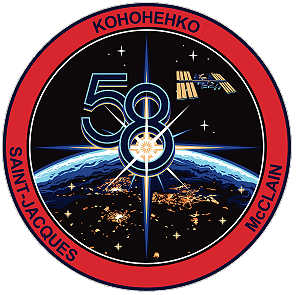 |
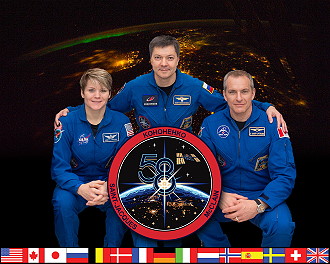 |
 |
|
![]()
Crew, launch- and landing data
| No. | Nation | Surname | Given names | Position | Spacecraft (launch) |
Launch date |
Launch time |
Spacecraft (landing) |
Landing date |
Landing time |
Mission duration |
Orbits |
| 1 | Kononenko | Oleg Dmitriyevich | ISS-CDR | Soyuz MS-11 | 03.12.2018 | 11:31:52.519 UTC | Soyuz MS-11 | 25.06.2019 | 02:47:42.4 UTC | 203d 15h 15m 50s | 3264 | |
| 2 | Saint-Jacques | David | Flight Engineer-2 | Soyuz MS-11 | 03.12.2018 | 11:31:52.519 UTC | Soyuz MS-11 | 25.06.2019 | 02:47:42.4 UTC | 203d 15h 15m 50s | 3264 | |
| 3 | McClain | Anne Charlotte "Annimal" | Flight Engineer-3 | Soyuz MS-11 | 03.12.2018 | 11:31:52.519 UTC | Soyuz MS-11 | 25.06.2019 | 02:47:42.4 UTC | 203d 15h 15m 50s | 3264 |
unofficial Backup Crew
| No. | Nation | Surname | Given names | Position |
| 1 | Skvortsov | Aleksandr Aleksandrovich Jr. | ISS-CDR | |
| 2 | Parmitano | Luca Salvo | Flight Engineer | |
| 3 | Morgan | Andrew Richard | Flight Engineer |
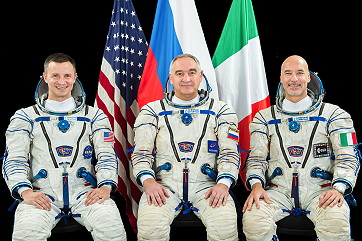 |
|
 |
Expedition Report
|
ISS Expedition 58 began with the undocking of
spacecraft Soyuz
MS-09 on December 20, 2018 at 01:40:22
UTC. The former Expedition 57 (Sergei
Prokopyev, Alexander
Gerst and Serena
Auñón-Chancellor) returned safely to Earth.
On December 27, 2018, an ISS reboost was performed using Progress MS-10 thrusters. This reboost was to set up for Soyuz MS-12 launch in February / March 2019. The engines started at 03:05 UTC and fired 337.5 seconds. The ISS got 0.65 m/sec. more speed. The actual parameters are 404.4 km x 422.8 km. The ISS needs 92.62 minutes for each orbit. After delivering more than 5,800 pounds (2,630 kg) of cargo, a SpaceX Dragon (CRS-16 or SpX-16) cargo spacecraft departed the International Space Station on January 13, 2019. Flight controllers used the space station's Canadarm2 robotic arm to detach Dragon, which arrived on December 08, 2018, from the bottom of the station's Harmony module. After Dragon was maneuvered into place, the spacecraft was released by a ground-controlled command monitored by Anne McClain at 23:33 UTC. Dragon's thrusters were fired to move the spacecraft a safe distance from the station before SpaceX flight controllers in Hawthorne, California, commanded its deorbit burn. The spacecraft splashed down on January 14, 2019 at about 14:15 UTC in the Pacific Ocean, where recovery forces retrieved Dragon and more than 4,000 pounds (1,814 kg) of cargo. On January 18, 2019, an ISS reboost was performed using Progress MS-10 thrusters. This reboost was to set up for the flight of Russian transport ships. The engines started at 18:01 UTC and fired about 500 seconds. The ISS got 1 m/sec. more speed. The actual parameters are 407.4 km x 422.2 km. The ISS needs 92.62 minutes for each orbit. Filled with trash, the unpiloted Russian cargo ship Progress MS-09 undocked from the Pirs module of the International Space Station at 12:55 UTC on January 25, 2019. On the same day Russian flight controllers sent commands to fire the Progress' engines and deorbit the space freighter, sending it to a destructive entry over the unpopulated South Pacific Ocean. More than two months after Northrop Grumman, delivered several tons of supplies and scientific experiments to the International Space Station aboard its Cygnus cargo spacecraft, the spacecraft left the orbiting laboratory on February 08, 2019 at 16:16 UTC. Anne McClain and David Saint-Jacques used the station's Canadarm2 robotic arm to release Cygnus NG-10, dubbed the "SS John Young", after the Apollo 16 moonwalker. Cygnus departed the station with 5,500 pounds (2,495 kg) of trash and carried out an extended mission over about two weeks. The spacecraft maneuvered to a higher altitude where an external CubeSat deployer, developed by industry partner NanoRacks to provide increased commercial access to space, released two CubeSats into orbit. Cygnus then moved to a lower orbit to deploy a third CubeSat, KickSat-2, which carries 100 tiny satellites called femtosatellites. The femtosatellites each include a power, sensor and communication system on a printed circuit board that measures 3.5 by 3.5 cm, with a thickness of a few millimeters and a mass of less than 3.5 ounces. These deployments demonstrate additional commercial activity and technology advancements enabled by the partnerships forged through the orbiting laboratory and the potential for future opportunities. Cygnus deorbited with thousands of pounds of trash on February 25, 2019, as it burned up harmlessly over the Pacific Ocean while entering Earth's atmosphere. Cygnus launched November 17, 2018 on an Antares rocket from NASA's Wallops Flight Facility in Virginia and arrived at the station on November 19, 2018, carrying a variety of science and technology investigations. On February 26, 2019, an ISS reboost was performed using Progress MS-10 thrusters. This reboost was to set up for the flight of Soyuz MS-12 on March 14, 2019 and Progress MS-11 on April 04, 2019. The engines started at 02:21 UTC and fired 451 seconds. The ISS got 0.91 m/sec. more speed. The actual parameters are 406.6 km x 428.5 km. The ISS needs 92.678 minutes for each orbit. On March 02, 2019 at 07:49:03 UTC the SpaceX Demo-1 flight test (SpX-DM1) to the International Space Station for the agency's Commercial Crew Program, which is working with the U.S. aerospace industry to launch astronauts on American rockets and spacecraft from American soil for the first time since 2011, launched on a Falcon 9 rocket from historic Launch Complex 39A at NASA's Kennedy Space Center in Florida. This was the first uncrewed flight test of NASA's Commercial Crew Program and provided data on the performance of the Falcon 9 rocket, Crew Dragon spacecraft and ground systems, as well as in-orbit, docking and landing operations. The Crew Dragon spacecraft carried about 400 pounds (181 kg) of crew supplies and equipment to the space station and return some critical research samples to Earth. The flight test also will provide valuable data toward NASA certifying SpaceX's crew transportation system for carrying astronauts to and from the space station. SpaceX's Demo-2 test flight (SpX-DM2), which will fly NASA astronauts to the space station, was targeted to launch in July 2019. Following each flight, NASA will review performance data to ensure each upcoming mission is as safe as possible. After completion of all test flights, NASA will continue its review of the systems and flight data for certification ahead of the start of regular crewed flights to the space station. Crew Dragon performed a series of phasing maneuvers to gradually approach and autonomously dock with the International Space Station. Crew Dragon docked to the space station on March 03, 2019 at 10:51 UTC and will remain there until March 08, 2019. Crew Dragon undocked on March 08, 2019 at 07:32 UTC. About five hours after Crew Dragon left the station, it conducted its deorbit burn, which last up to 10 minutes. It took about 30 minutes for Crew Dragon to re-enter the Earth's atmosphere and splashed down in the Atlantic Ocean at 13:45 UTC. ISS Expedition concluded with the docking of Soyuz MS-12 on March 15, 2019 at 01:01:39 UTC. Station commander remained Oleg Kononenko. Among the US experiments are: Cryogenic liquids are cold substances with very low boiling points. They're used to fuel rockets, propel spacecraft and cool spacecraft equipment. The Robotic Refueling Mission 3 (RRM3) will demonstrate technologies to store and transfer liquid methane, a type of cryogenic liquid, in space for the first time. The test will help NASA develop capabilities to service and refuel spacecraft in orbit set for long-duration flights. Hydrogels often are used for tissue regeneration purposes due to their high-water content and how easily they can be customized. Hydrogel Formation and Drug Release in Microgravity Conditions takes advantage of reduced fluid motion in microgravity to more precisely study behavior of the gel and its potential as a wound-healing patch. The CASIS PCG-16 investigation grows large crystals of an important protein, Leucine-rich repeat kinase 2 (LRRK2) in microgravity for analysis back on Earth. This protein is implicated in development of Parkinson's disease, and defining its shape and morphology may help scientists better understand the pathology of the disease and develop treatment therapies. Crystals of LRRK2 grown in gravity are too small and too compact to study, making microgravity an essential part of this research. The European Space Agency's (ESA) Molecular Muscle investigation examines the molecular causes of muscle abnormalities from spaceflight in C. elgans, a roundworm and model organism. This study could give researchers a better understanding of why muscles deteriorate in microgravity so they can improve methods to help crew members maintain their strength in space. The research also could lead to new medical treatments for those who chronically suffer from muscle loss, such as the elderly. |
Photos
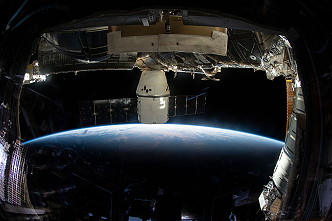 |
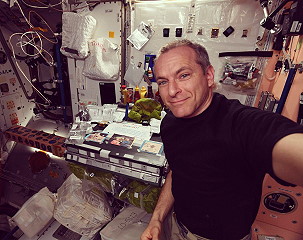 |
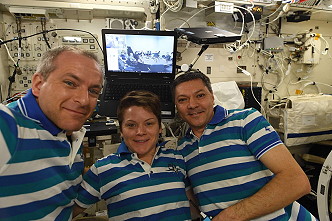 |
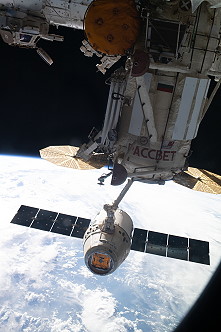 |
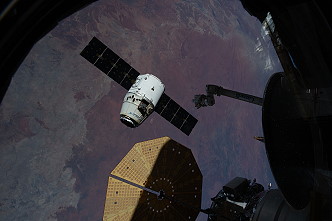 |
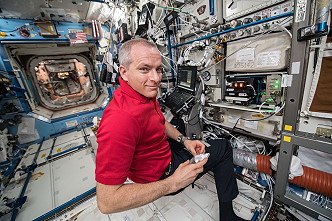 |
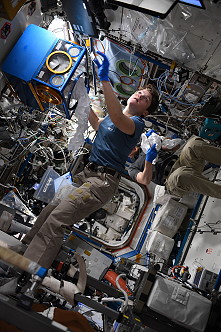 |
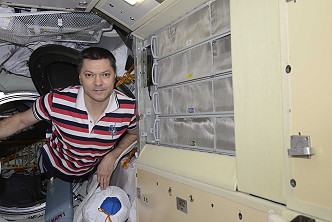 |
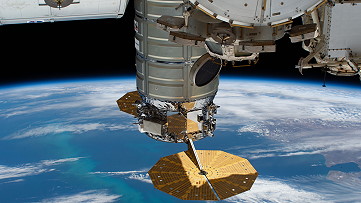 |
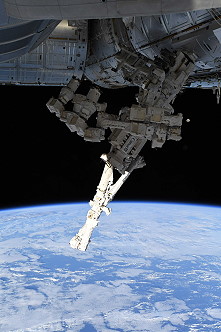 |
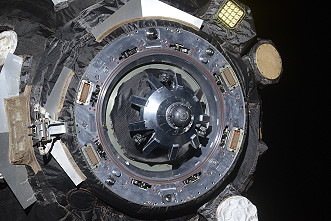 |
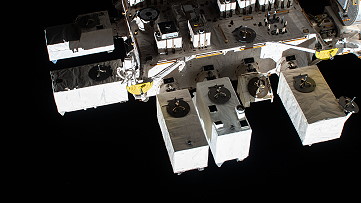 |
 |
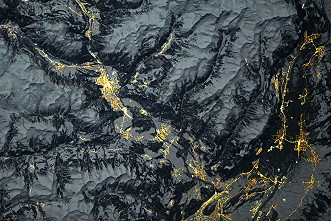 |
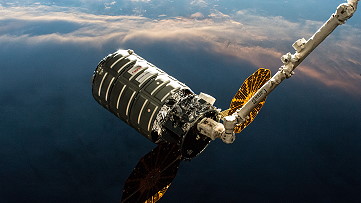 |
 |
 |
 |
 |
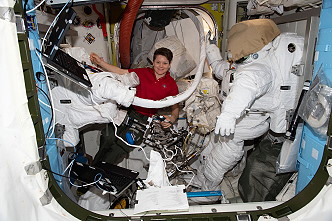 |
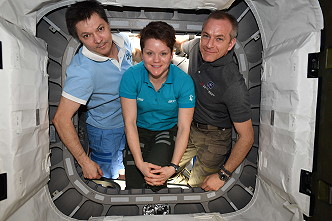 |
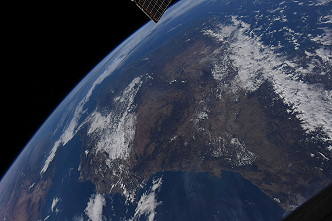 |
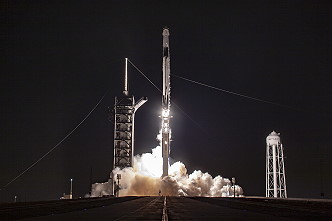 |
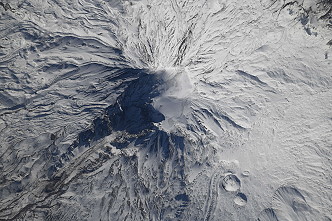 |
 |
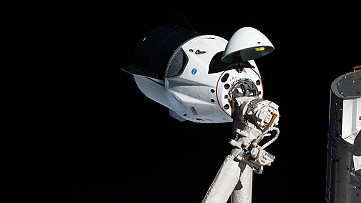 |
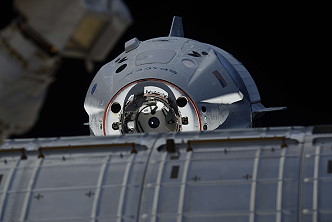 |
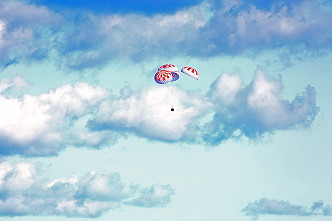 |
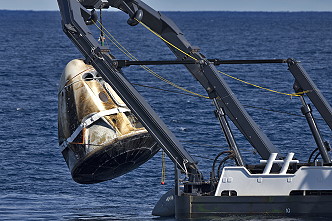 |
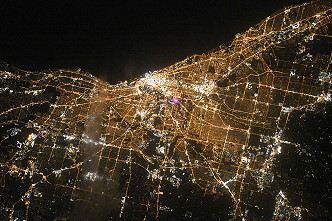 |
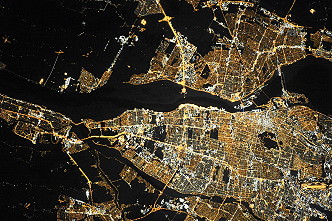 |
 |
 |
 |
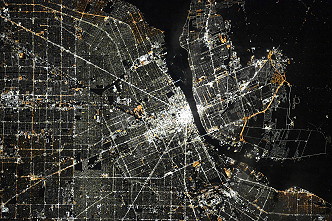 |
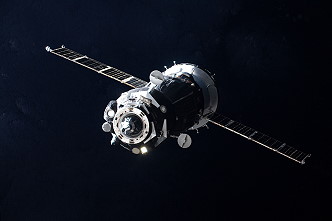 |
more onboard photos |
|
| © |  |
Last update on December 15, 2020.  |
 |